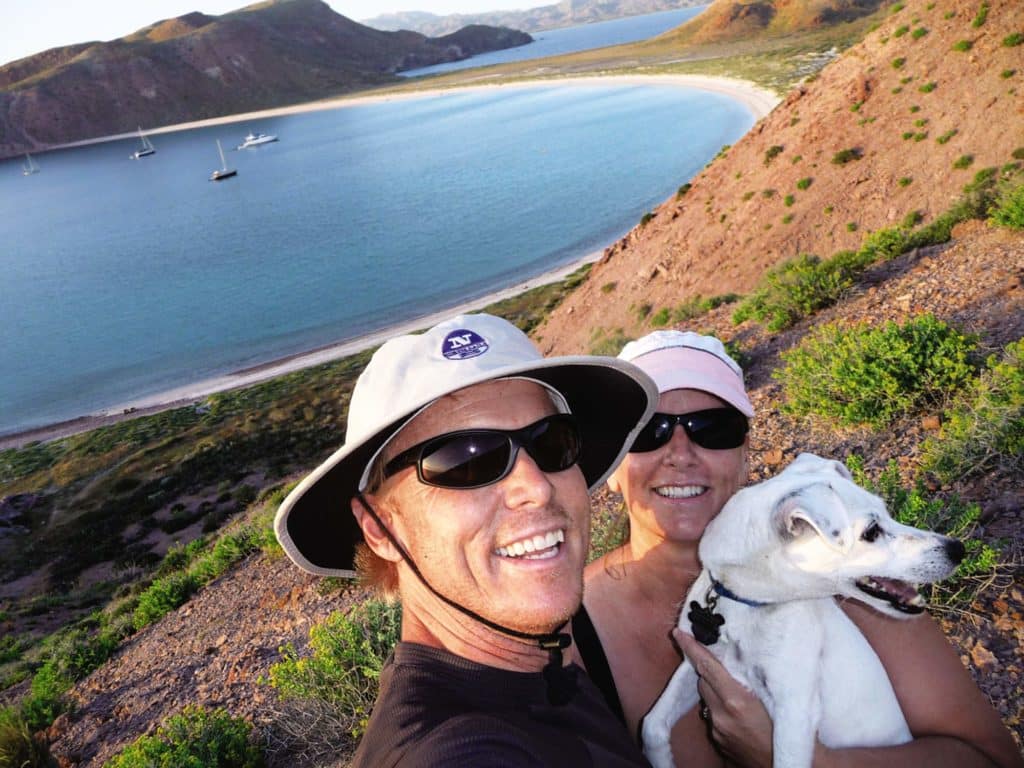
Of all the ways I have traveled, I love my sailboat the best. A wanderer since childhood, I have climbed glaciers with a heavy pack, forded African rivers by motorcycle, and landed on remote fjords by floatplane. None of it compares with cruising. I am certain there is no better way to encounter the world than by boat.
I’ve discovered that my humble craft has an alchemical quality, a certain trick of distilling the places, weather, events, people, and, yes, the scares and repairs too, into an extraordinarily pure essence, a rare and wonderful possession for life. This treasure can only be earned, never purchased, and cannot be lost or stolen. A few words are enough to conjure it all.
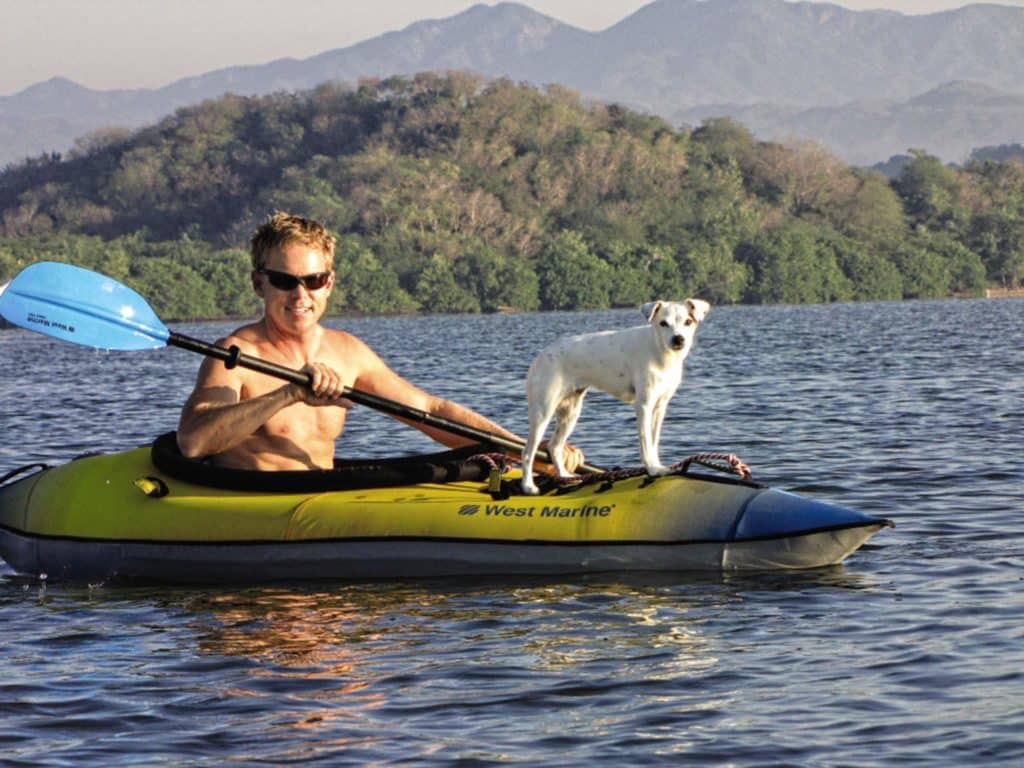
“Did you go up the Rio Dulce?” another sailor might ask, and we are instantly in Guatemala. We feel the alertness and unease of anchoring off Livingston, an unpredictable frontier town, waiting for the tide to rise high enough to bump and scrape our keel over the river bar. We know the sense of wonder around every bend in that lush and mighty river canyon. We’ve seen a man from another century approach in his dugout canoe and ask if we might help charge his cellphone.
When I began roaming on my own boat, the 36-foot Beneteau Liberte, a salty friend put it best: “Right now, all you see is charts,” he said, “but sailing will turn every one of those places into a story.”
Today, I still have the crude map I drew for myself before I began cruising. It was mere wishful thinking. I didn’t even have a boat. Still office-bound, I sat through many meetings where the clients probably thought I was taking diligent notes. Instead, I was tracing and retracing my dream route, making lists of gear and ports of call, my head already out to sea.
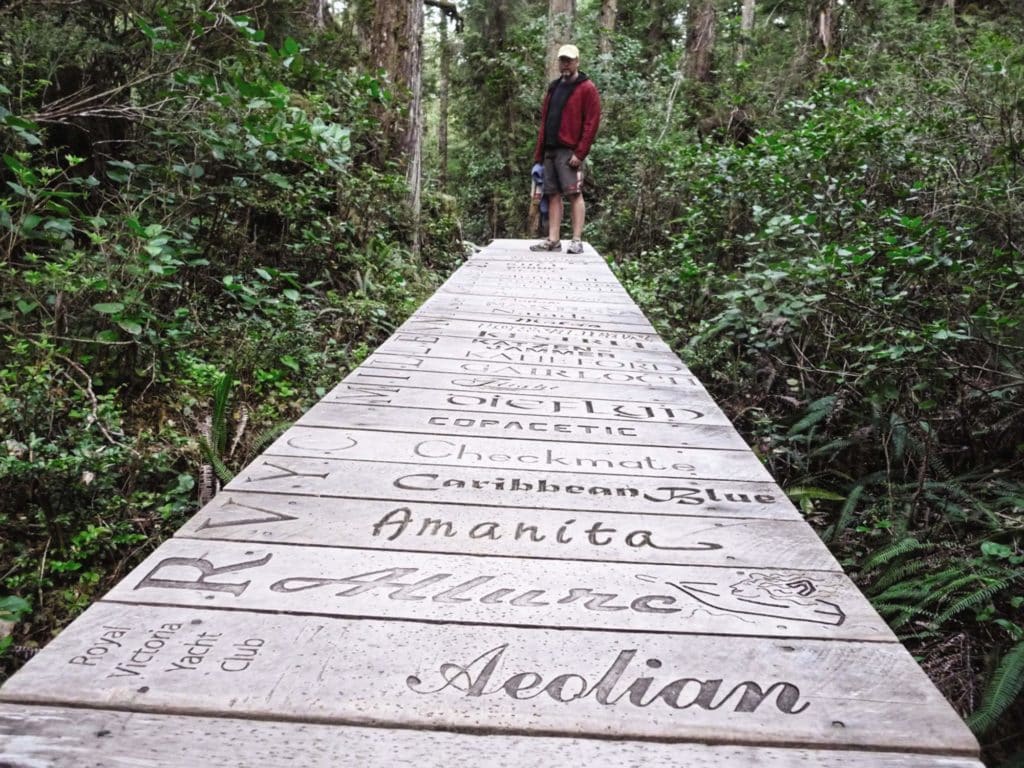
My anticipatory dotted line led from Bellingham, Washington, to Cuba and on to the Bahamas, a course I did indeed follow with my wife, Rebecca, during 10 incredible seasons. Today, every one of those dots puts a massive grin on my face.
First there was Vancouver Island, which Liberte circumnavigated counterclockwise in 2009 as a shakedown cruise. I went in March, April and May, with three buddies as crew. It was definitely early season. The lads and I wore our fuzzy caps most of the way and kept a close ear on Environment Canada’s weather forecasts. The payoff for this gamble was clear skies, consistent wind, no fog and no bugs. I remember running tidal narrows, feeling our way into stunning anchorages we had all to ourselves, and flying the spinnaker up Queen Charlotte Strait on a rare and glorious easterly. I remember rounding notorious Cape Scott under sail alone, tacking furiously against a foul current, and then shooting down the coast once we rounded. As we came into Quatsino Sound that evening, a family of bears was feeding along the water’s edge at low tide, scarcely giving us a glance as we crept past, wing on wing, riding every remaining zephyr. The boys and I didn’t want to start the engine and break that spell, so we simply coasted to the dock at Winter Harbour.
There was one big blow, with hurricane-force winds ripping down Brooks Peninsula, but my crew and I were safely tucked into shelter, playing pool at the Royal Canadian Legion, Branch 180, in Port Alice, where they deemed us local celebrities (“You’re the guys with the big blue sail!”) and would never let us buy our own drinks.
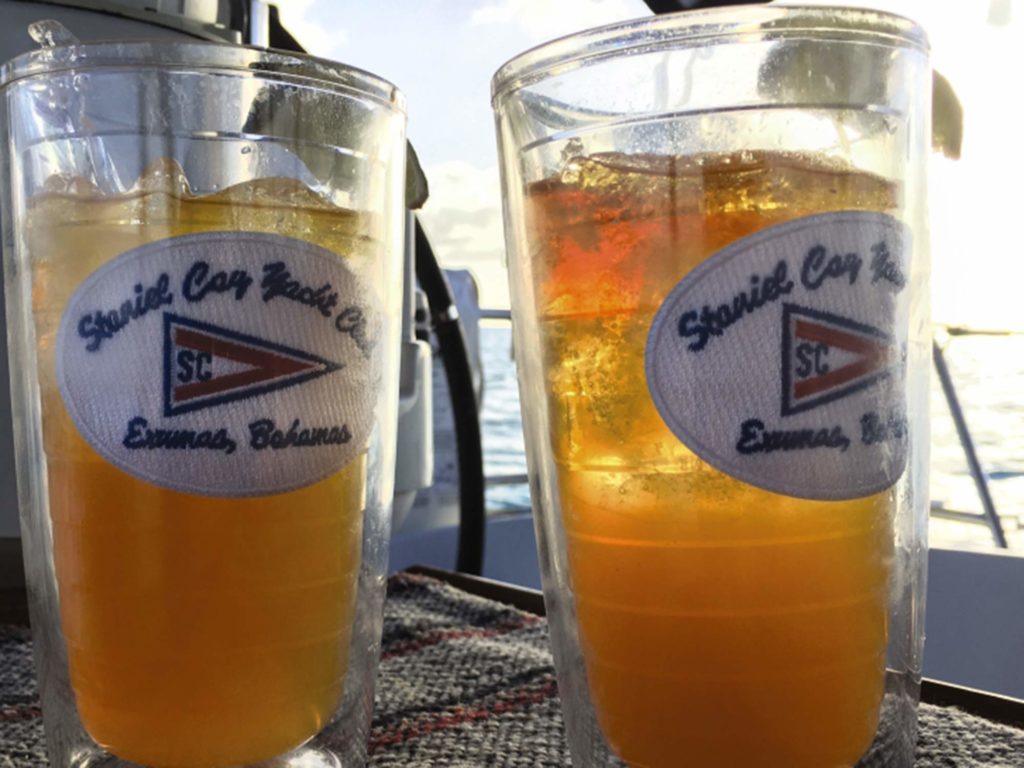
At Nootka Sound, we met Mark and Joanne Tiglmann, some of the last remaining lightkeepers in North America. They told us that we were the first boat to round the island that year. In Tofino, we waited until all the day-trippers had gone, and then we hiked through the rainforest to the best hot springs I’ve ever found. We saw wolf tracks on the beach. I watched three ravens steal baitfish from a charter fishing boat. They were nimble grifters, with one bird on high lookout, one perched on the rail, and one helping itself to the bait. Then they would rotate so that the next bird got its share. They spoke in murmurs so as not to tip off the seagulls.
I saw all that, and so much more, with my own eyes, felt it with every bit of my senses. All of it made possible only by running away on our own boat, by being intimidated, overwhelmed, sleepless, but always there.
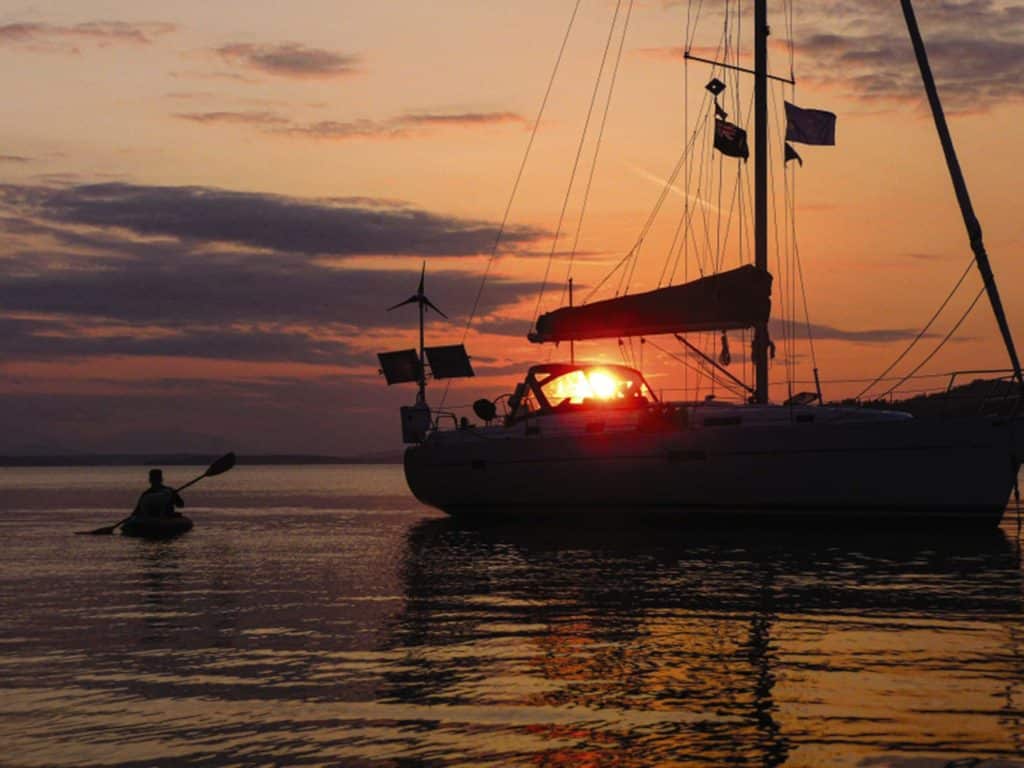
Cape Mendocino will always be that place where I underestimated the weather and paid the price all night long, running hard in big seas in the dark, waiting for something to break. At dawn, a pod of spinning dolphins told us that we would be OK.
I remember humpback whales breathing. I remember crossing under the Golden Gate Bridge, the pea soup clearing just enough to see the legendary span above, high-fives all round. I remember the sound of sea lions all night long on Pier 39. My crew and I rang the bell for admittance to the Dolphin Club, where we took the ceremonial plunge into chilly San Francisco Bay, and then felt the blood return in the sauna amid the banter of bums, poets and billionaires.
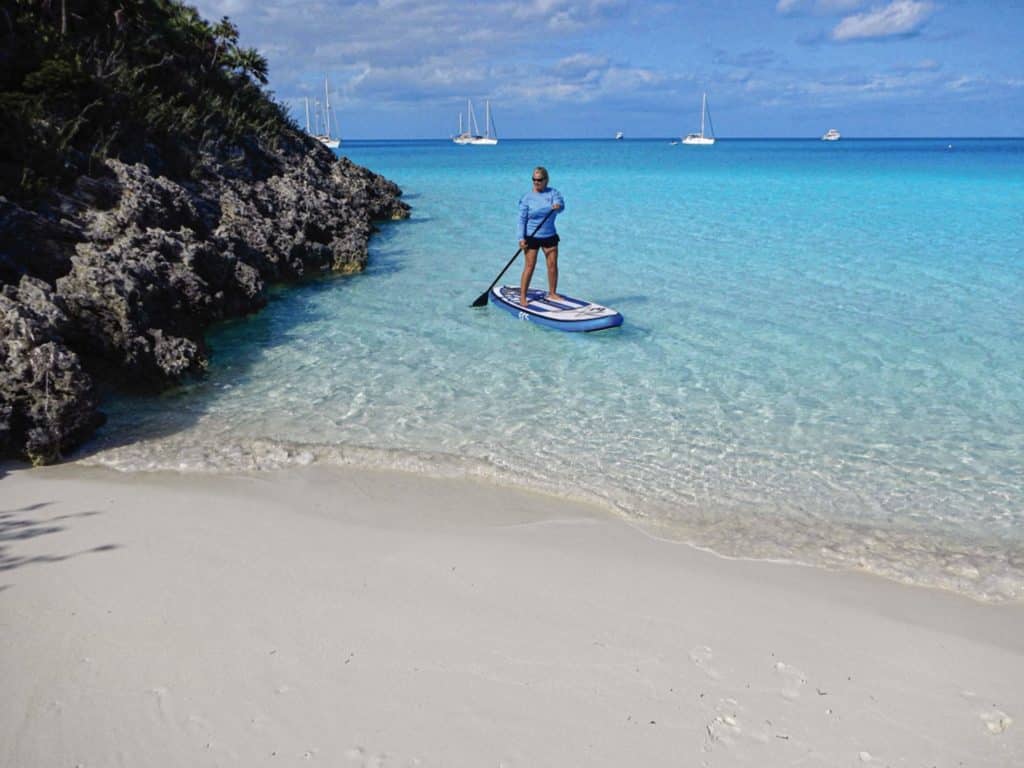
On Catalina Island, we hungry sailors tried our best to get into a private buffet line and got busted by the host. Later, he brought us three plates of food, with all the filet mignon, lobster and mashed potatoes we had coveted earlier. “At least you guys weren’t jerks about it,” he said. “There’s plenty. Eat up.” He was a top-selling yacht broker. As we devoured his food, he let us in on a trade secret: Moor the prospective buyer’s boat next to an even bigger boat. “They can’t stand the other guy being higher than they are,” he said.
To the uninitiated eye, the Baja peninsula looks like a whole lot of nothing. But that stretch of rock and sand is filled with hidden delights. My fellow cruisers and I can point out where the whales come right up to your dinghy at Bahia Magdalena. We can show you Los Frailes, where we took our first luxurious swim off the back of Liberte. We can guide you to Los Islotes and its frisky sea lions.
Not far from Isla San Francisco, one memorable day, I went overboard to rescue Samantha, our Jack Russell terrier, and suddenly needed rescuing myself. All these years later, I can still feel the intensity of that moment when Rebecca hauled the dog and me safely back onto Liberte, the huge adrenaline buzz and those first sweet deep breaths of air.
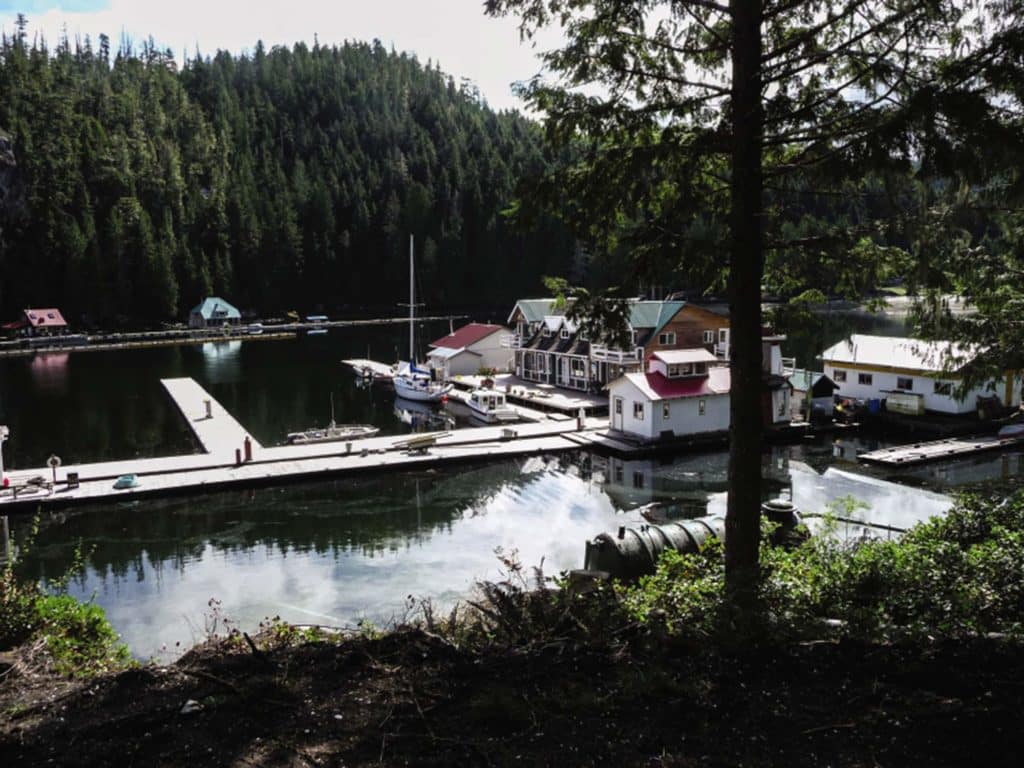
In the little fishing village of Agua Verde, people came out of their homes to wish us good morning. The dirt streets were swept and tidied, and the whole place was as neat as a pin. The headlines were filled with swine flu and travel warnings. Rebecca asked, “Why aren’t the news crews here instead?” The village Romeo, a black dog named Osso, took a shine to Samantha and trotted along, and when we kayaked back to Liberte, Osso swam after us for a long way, every bit the lovestruck village lad pining for a passing sailor girl.
All along the Baja, I can show you where to find waterfalls in the desert, orange groves, and tiny mountain towns with their churches and horseback festivals. I know which vendor in Santa Rosalia has the best hot dogs.
As I dream backward now, the entire thing looks like those place mats of the West that I loved as a kid at breakfast diners. They were filled with routes that could take you anywhere, with miniature drawings of each marvel: redwoods, rivers, volcanoes and Sasquatch.
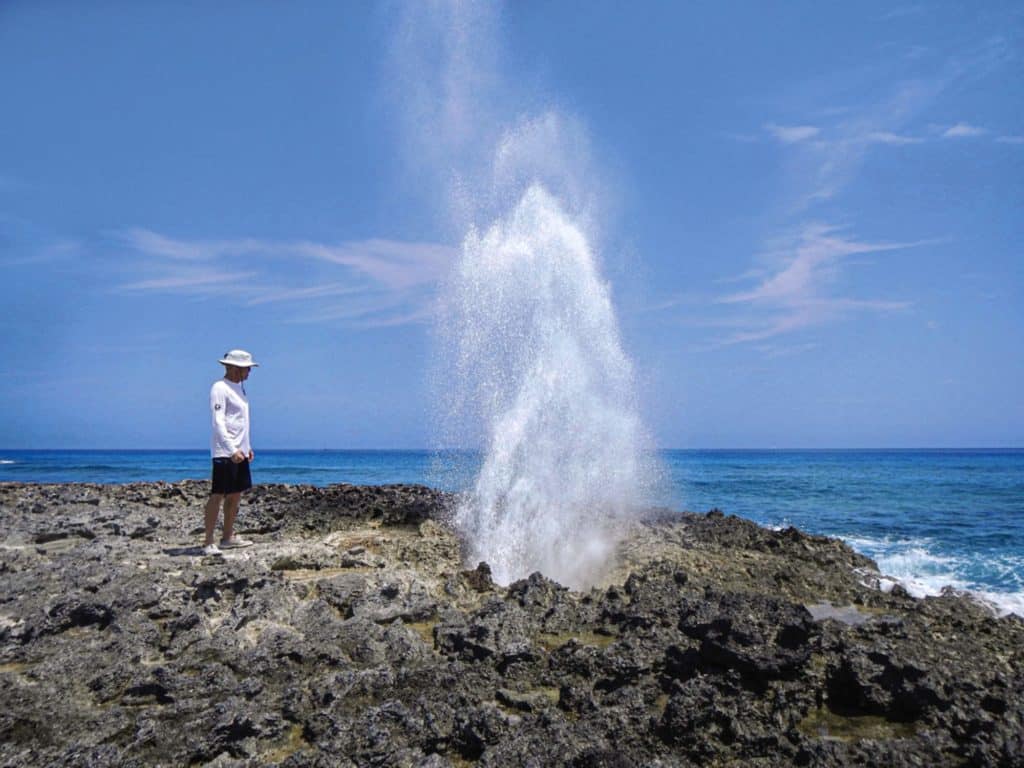
I was also obsessed with space as a boy, and even though I don’t expect to blast off with Elon Musk in this lifetime, I realize that my cruising boat has become a longed-for spacecraft. I have flown through stars. I have touched down on strange new worlds and climbed through primeval plants and mysterious stones, my faithful rocket ship waiting for me down there in the bay.
In Acapulco, with warnings about violence ashore, we easily could have chosen to sail on by. Instead, we entered the bay, and I will always remember our anniversary night, snuggled up with Rebecca on Liberte’s rail, watching all the city lights come on around us, a sparkling bowl of diamonds.
Zihuatanejo was the dinghy concierge, the huge outdoor market, and my day of surfing with two locals who carried their boards old-school on top of their Volkswagen Beetle, with towels for a roof rack and ropes lashed through the windows. It was where we helped rescue a boat that dragged anchor, which then proceeded to try to anchor in exactly the same place again (directly upwind of us!). Alan on motor trawler Beverly J, with an entire workshop on his aft deck, expertly crafted another metal pin for the one that had broken on Liberte’s autohelm. Thank you, Alan; thank you, buddy boats; and thank you, locals who helped us all along our way, most of whom we will never meet again.
We had read about the Gulf of Tehuantepec, and anticipated and dreaded it in equal measure, but nothing could prepare us for actually being in that place. There’s no way we could anticipate that, instead of spindrift fury, it could be mirror-calm. And that, on Rebecca’s birthday, she could dive into that infinite blue with dolphins so curious about us, we were certain that they had never seen another human.
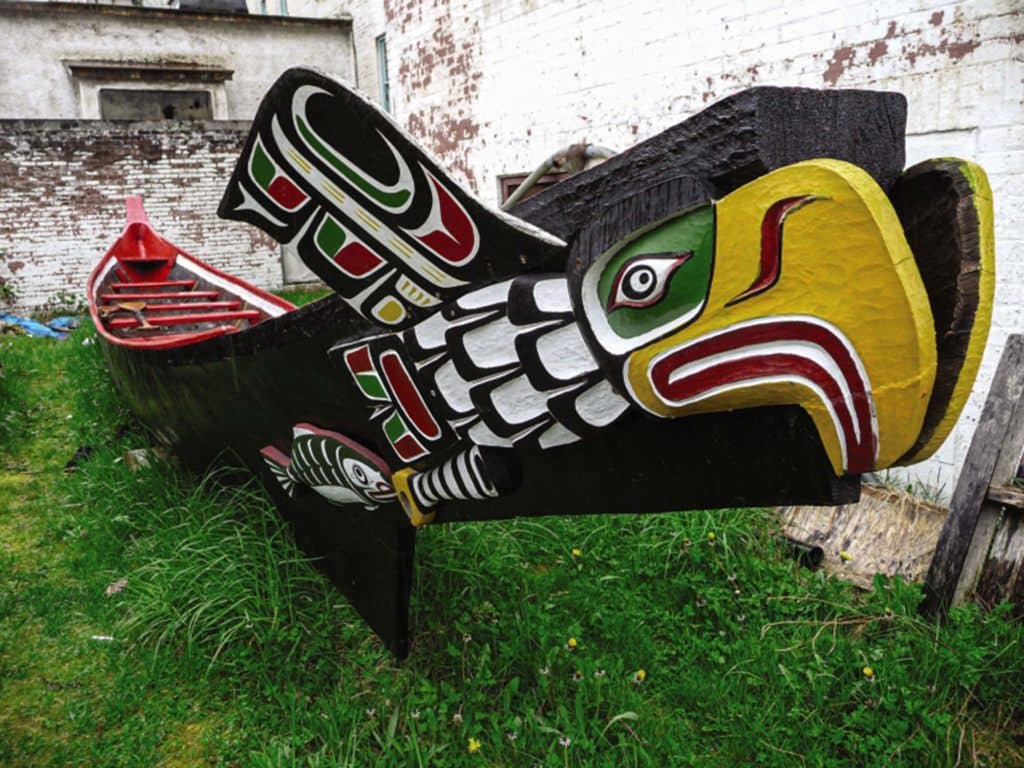
As I consider our route, I still know the harbors and hazards by heart. I can still point, more or less, to the spot where I hit an unlit panga. It was dense-black in the early morning. Liberte had a nice head of steam, sailing upwind with full sails in that fragrant offshore night wind, so perfectly balanced that she was steering herself without the autopilot. At first impact, I thought we’d hit a log, which is not uncommon near these river estuaries. But when I aimed my spotlight behind the boat, two men looked back at me with wide eyes. My guess is they’d been fast asleep. Out of nowhere, I’d hit them hard, hooked their anchor line, and was now towing them. I had a sharp knife in hand but resisted the urge to cut their only line. I luffed sails, untangled our boats, and made sure that the guys were OK, apologizing profusely in my best broken Spanish.
Never did I ever expect to intentionally put my boat into a surf break. That is the stuff of a sailor’s nightmares. But along El Salvador’s coast, Rebecca and I did exactly that to get to the anchorage. We waited our turn, put Samantha below, cleared the deck, locked the hatch boards, and made sure that the engine would hit max revs. The previous day, a boat had come in slow, gone sideways on a wave, and been pooped and flooded. Our guide on his personal watercraft raised his hand and signaled us forward. Rebecca steered while I redlined the Yanmar. We surfed one, two, three quite-sizable breaking waves, and then we were through and into the flat lagoon. Rebecca grinned and said, “Let’s do it again!”
Vast, unpredictable and a long way from anywhere, the Golfo de Fonseca is where I did my customary engine check and discovered a bilge full of oil beneath my faithful Yanmar, in the most remote place we’d been so far. All cruisers know that feeling. And they know the improvisation it takes to keep going without the right parts. Rebecca created a tray from aluminum foil to catch the oil, and every few hours of motoring, we’d pour all that oil right back into the engine again. We did a lot of miles that way.
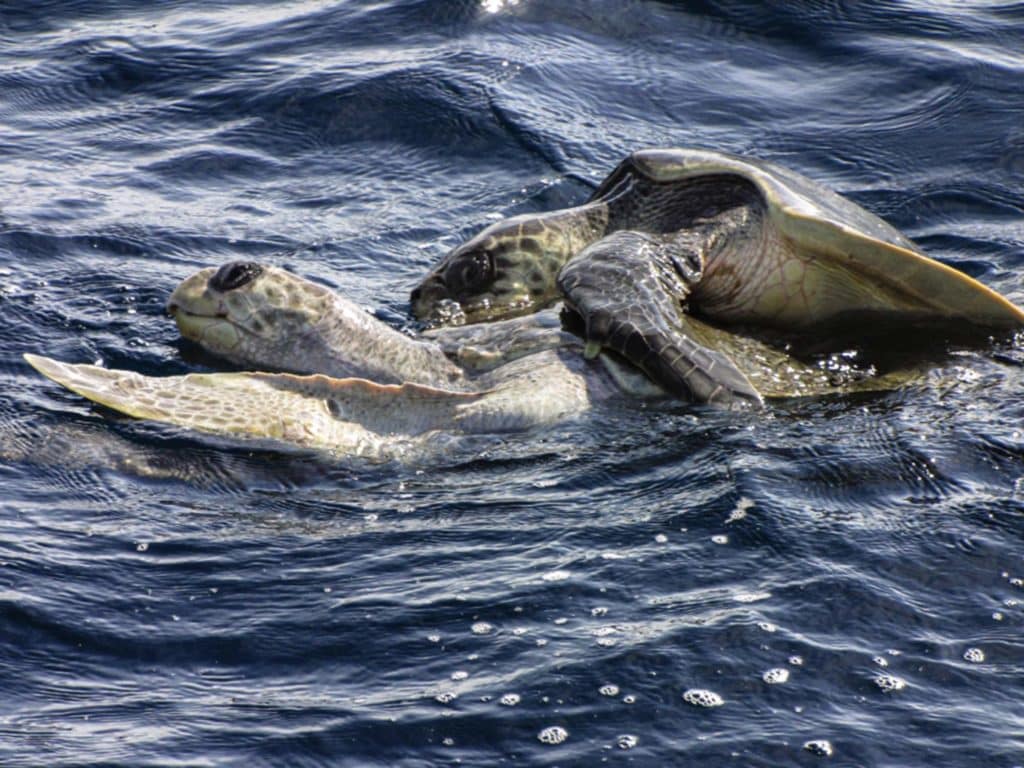
We had heard tall tales of the Papagayo winds, and one day, there they were, howling, as advertised. Liberte flew down the Nicaraguan coastline, a triple reef in her main. It was uncanny, sailing in 40 knot winds in absolutely flat water while being sandblasted from shore. In Bahia Santa Elena, at the north end of Costa Rica, we hunkered down for several days waiting for those gusts to dial down, just a little.
In Costa Rica, while other cruisers complained of their clearing-in woes—including surf landing while trying to keep documents dry, catching a local bus, and waiting around for hours
—I took the easy way out. I found myself squired around by an extraordinarily beautiful agent. At every stop in officialdom, the bureaucrats, obviously eating out of the palm of her hand, waved us through cheerily. It was the best clearing-in experience ever, and it was also the most expensive. That invoice was shocking.
Costa Rica was monkeys stealing our breakfast. Rebecca and I swam in waterfalls and went skinny-dipping off Liberte into the warmest water, the bioluminescence so powerful that it outlined our entire bodies as we moved—an utterly hallucinogenic encounter yet with an entirely clear head.
Panama was astounding: a land of tall shiny buildings, riverbank tribes, and the bucket-list adventure of navigating the Panama Canal in our very own boat. As they rafted us together with two buddy boats, I looked over at our friend Steve in the middle boat as the first locks opened. “You feeling OK?” I asked. “You bet!” he said. “I’ve got the world’s biggest fenders, one on each side.”
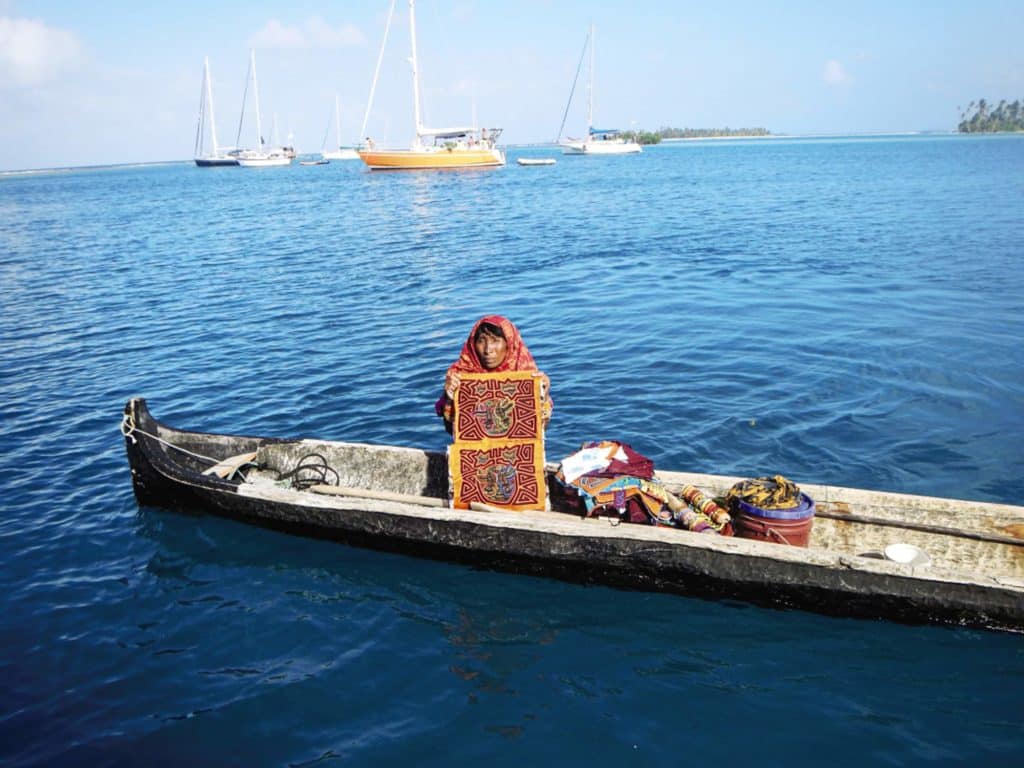
We cruised the San Blas Islands for six enchanted off-the-grid weeks. We anchored at Bug Island and fed our organic waste to the island pig. We were guests in a Guna Yala village when we smelled smoke and heard screams. Within a few minutes, the village was on fire, the flames jumping easily from wood hut to hut. We picked people out of the water. There were no lives lost, but more than half the village was burned to the ground, most likely from a cooking fire gone out of control.
We went back the next day, the ruins still smoking, and donated all the items we could muster. The villagers saw us coming and broke into a wailing, chanting choir of welcome, the memory of which still sends chills up my spine. We watched them test the fins and masks they needed for fishing, and try on our clothes. Within minutes, they had strung their new blue tarp overhead for shade and were stirring something inside the big crab pot.
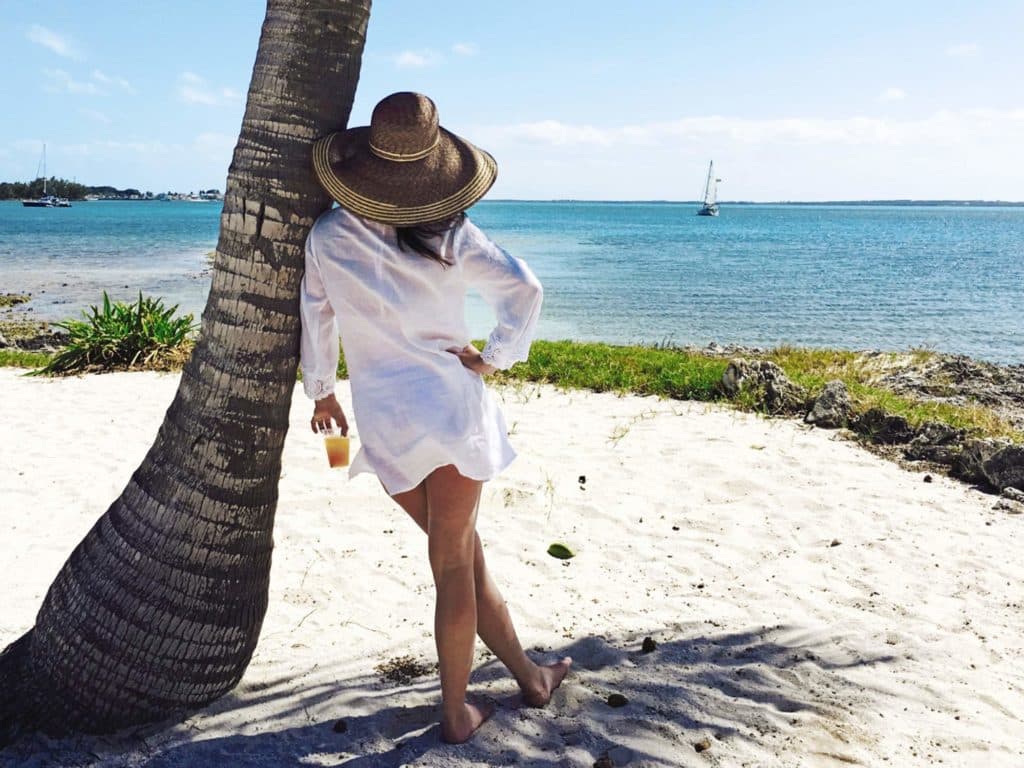
All my life, I will remember these things. I will recall anchoring up Panama’s Chagres River, listening to the howler monkeys and other creatures we could not identify, the jungle coming alive at night all around our solitary boat. Sometimes these thrills come at a cost. I somehow scratched my eye. In the jungle and in that climate, infection happened quickly. By the time we reached the fabled island of Escudo de Veraguas, I was in bad shape and there was no time to search for those pygmy three-toed sloths. From Bocas del Toro, I flew to the Johns Hopkins hospital in Panama City so that a medical team could save my eye.
The next season, after the boat summered in Guatemala’s Rio Dulce, we enjoyed Placencia immensely and explored the outer atolls of Belize at a leisurely pace. Half Moon Caye, shared only with our buddy boat, was wild and alive with creatures above and below the sea. Our land-traveling friends had raved about Ambergris Caye, but we found that we preferred the peace of quieter spaces. By cruising in our own boat, we had become immeasurably spoiled.
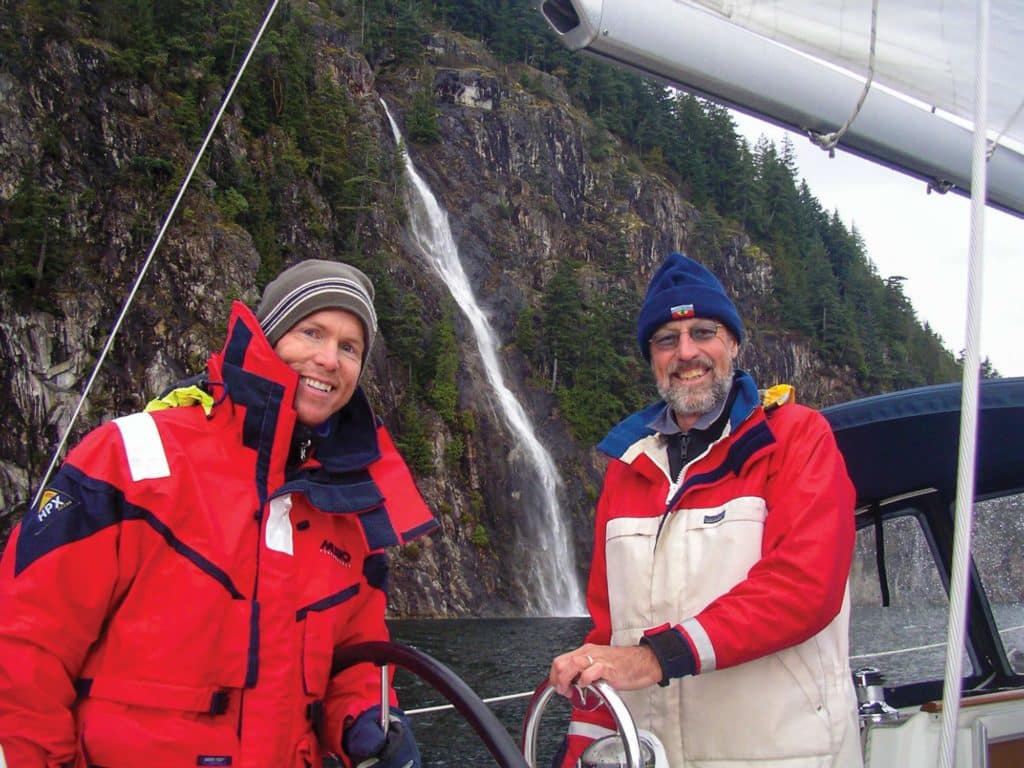
The thing I love most about my boat, and some days hate, is that it always brings me into direct and undeniable contact with the world. I challenge you to come up with a better way to eat, sleep and move within the natural rhythms.
In control of our own boat, we cruisers have what writer Tim Kreider describes so well (although he is talking about traveling by train) as “the ideal living situation…constant change within a framework of structure…the cozy in-betweenness of it, being suspended between destinations, temporarily exempt from the relentless press of time.”
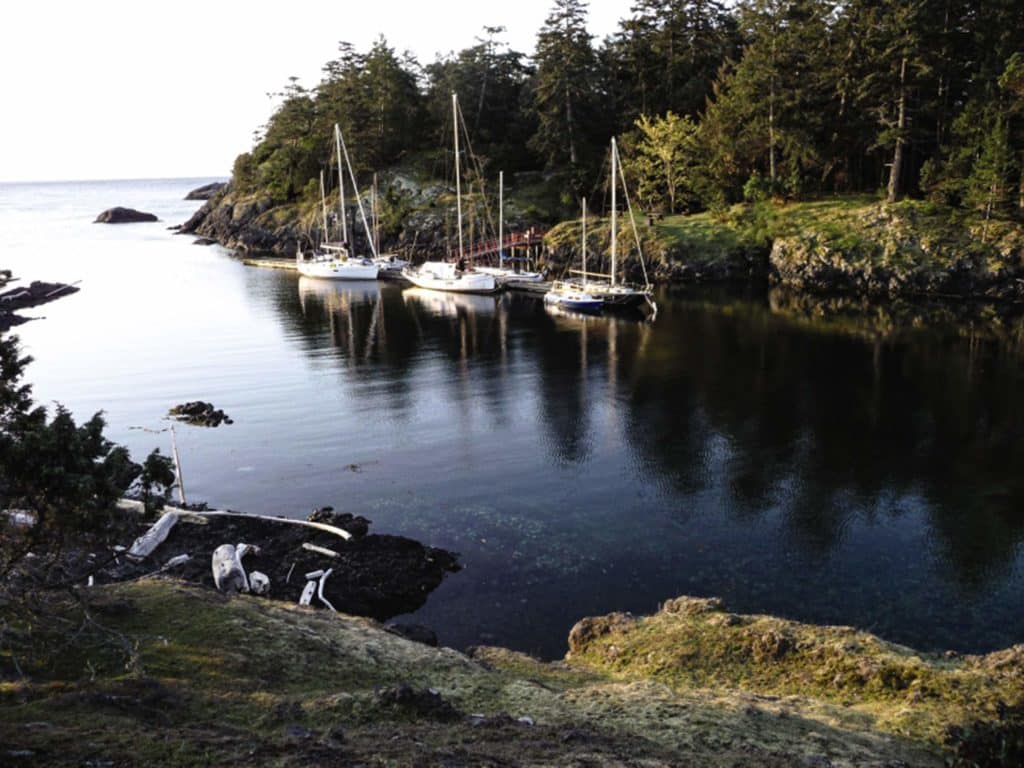
My map always led to Cuba, where X marked the spot of my unending intrigue. As Americans on a US-flagged vessel, we were presented with a tough proposition. But in 2016, my dream came true when we signed up for the Conch Republic Cup. Instead of import and export regulations and travel bans, we were now participating in a goodwill event between nations, and Liberte was a piece of athletic equipment. With the all-important US Coast Guard CG-3300 form in hand, giving us permission to cruise to Cuba and return to the United States without penalty, we made the voyage. I’ve long been fascinated with Ernest Hemingway, and so to follow in his wake from Key West, Florida, to Havana across the Gulf Stream, in my own craft, was a special treat. Liberte even won a racing trophy for one epic stage: the Cuba Coast Challenge. If thieves ever decide to break into my house, they can have the few other possessions I own. Just leave that simple, sheet-metal Cuba trophy on my shelf, please.
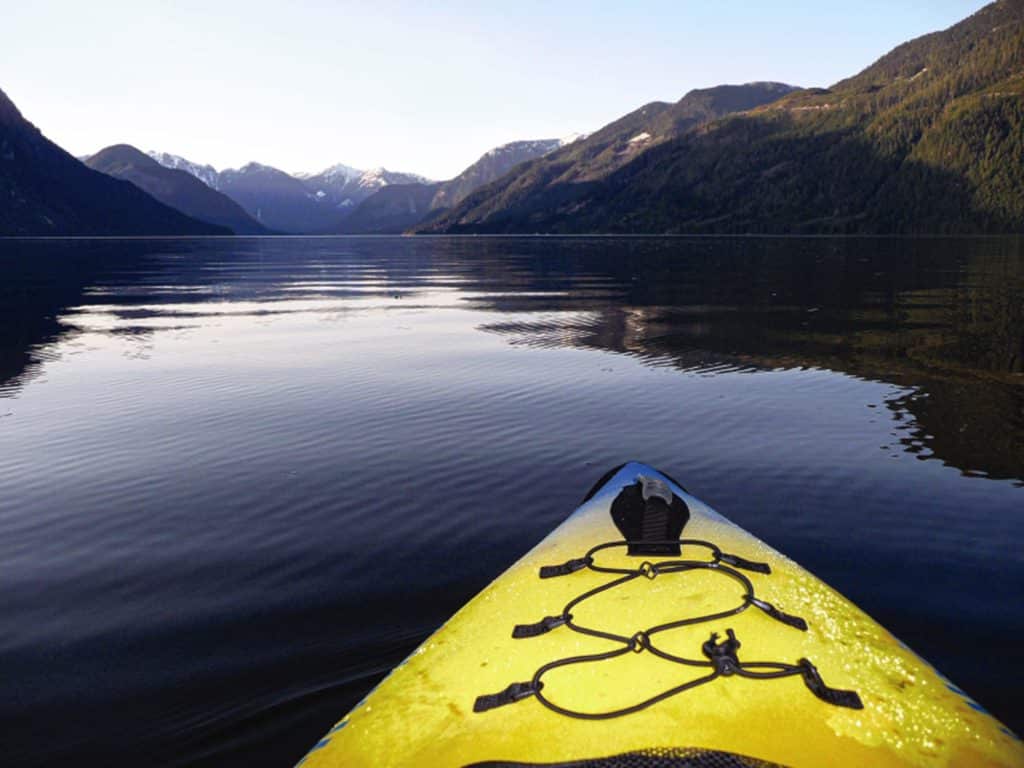
And who does not dream of cruising to a place like the Bahamas, where we roamed for three fine seasons? Every spring, Rebecca and I would return to Indiantown, Florida, put Liberte on the hard, and fly home to earn what Jimmy Buffett calls “fun tickets.” Every fall, we’d splash and dash across the Gulf Stream. When I look at those Bahamas charts, I still remember watching intently, often impatiently, for favorable conditions to cross. I remember seeking shelter from those cold, blustery northers. I remember the Exumas rolling by, dreamlike, and the entertaining anchorage at Staniel Cay. In the Bahamas, we flew the spinnaker in wind and flat, warm water: a sailor’s nirvana. We watched curious rays and sharks under our paddleboards at Manjack Cay. We paddled the Exuma Cays Land and Sea Park, snorkeled the sunken drug-smuggling airplane at Norman’s Cay, and ran Liberte gingerly through the notorious Whale Cut Passage into our beloved northern Abacos. I remember sipping Goombay Smashes on Green Turtle Cay, perfectly in the moment and thoroughly on island time.
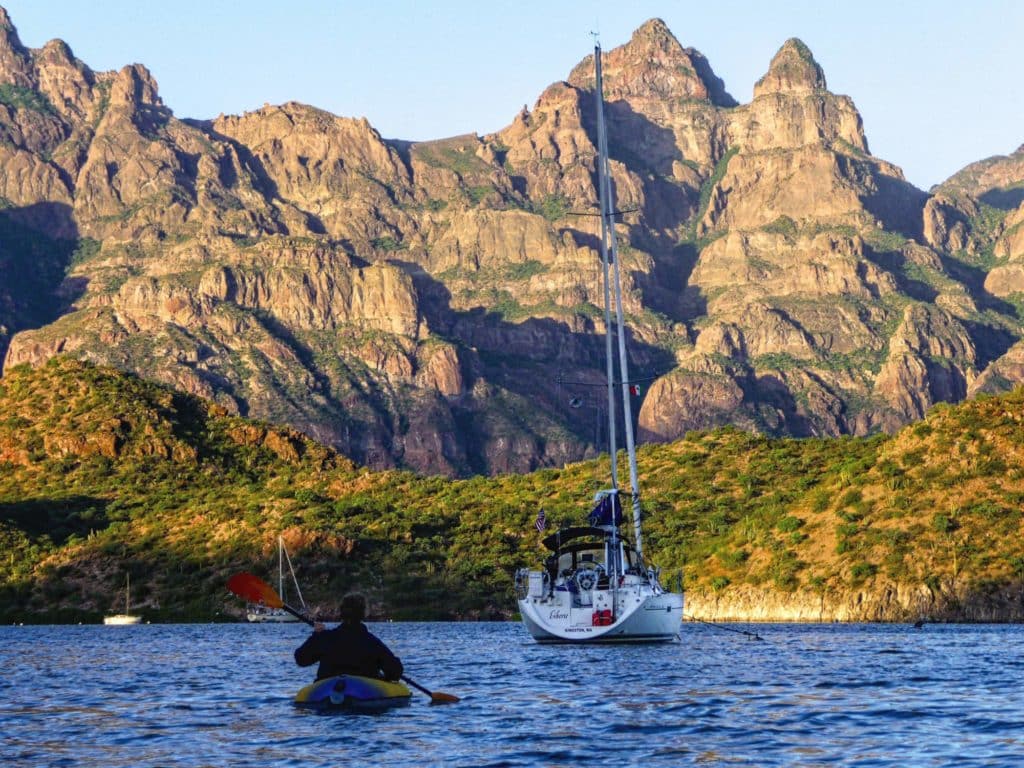
In the town of New Plymouth, population 400, was a small customs office where I filled out forms in triplicate while an evangelist preached at high volume from the TV set. A Bahamian cut my hair in his living room and told me about his ancestors, the Loyalists who had fled there after the American Revolution. “Where are you going next?” he asked. “Back to the States,” I said. “You be careful there!” he admonished. Cruising is always a chance to flip the script and see things from the other side.
In every place we visited, we found what you might at first be tempted to call pluses and minuses. It’s easy to chase the mirage of the best place, even the perfect place. But as the world unfolds further beneath your keel, you realize that’s a faulty point of view. Any place you take your boat can be heaven or hell. It is entirely up to you.
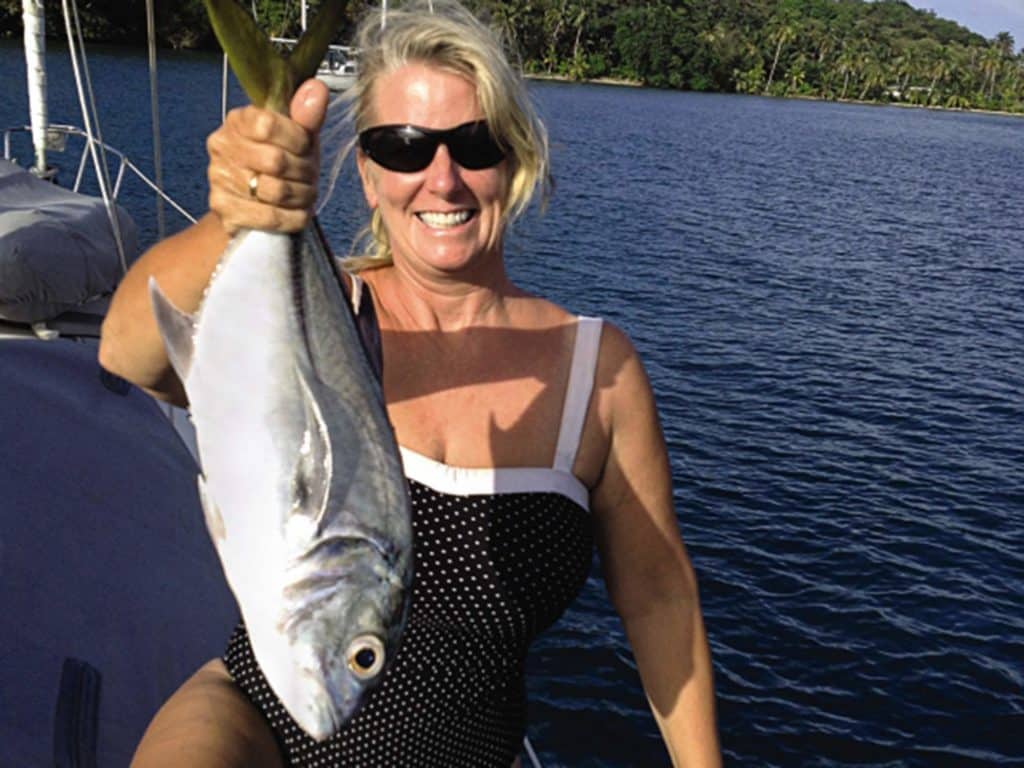
True exploration means embracing and relishing it all, and always finding that cruising magic in the moment, even if the no-see-ums are chewing you to pieces, the norther lasts for days, and you’ve blown your whole budget on just one provisioning run at that shockingly expensive island store.
Every challenge offers a chance to open a little wider, to be curious instead of fearful, to invalidate your favorite biases. Do that and you will always have a good time, no matter where your own dotted line may lead.
I still have my little hand-drawn map. By now, I know exactly where it leads and why. To other sailors on the fence, I would repeat Joshua Slocum’s advice: “I would say go.”
Cruising has a value that defies ordinary calculations. In deciding where to cruise, or whether to cruise at all, it would be a big mistake to analyze only nautical miles, engine hours and clearing-in fees, to pore over projections as if sailing were some kind of a business venture. How much does it take to cruise? As much as you have. Wherever I go, people tell me that “boat” stands for “break out another thousand.”
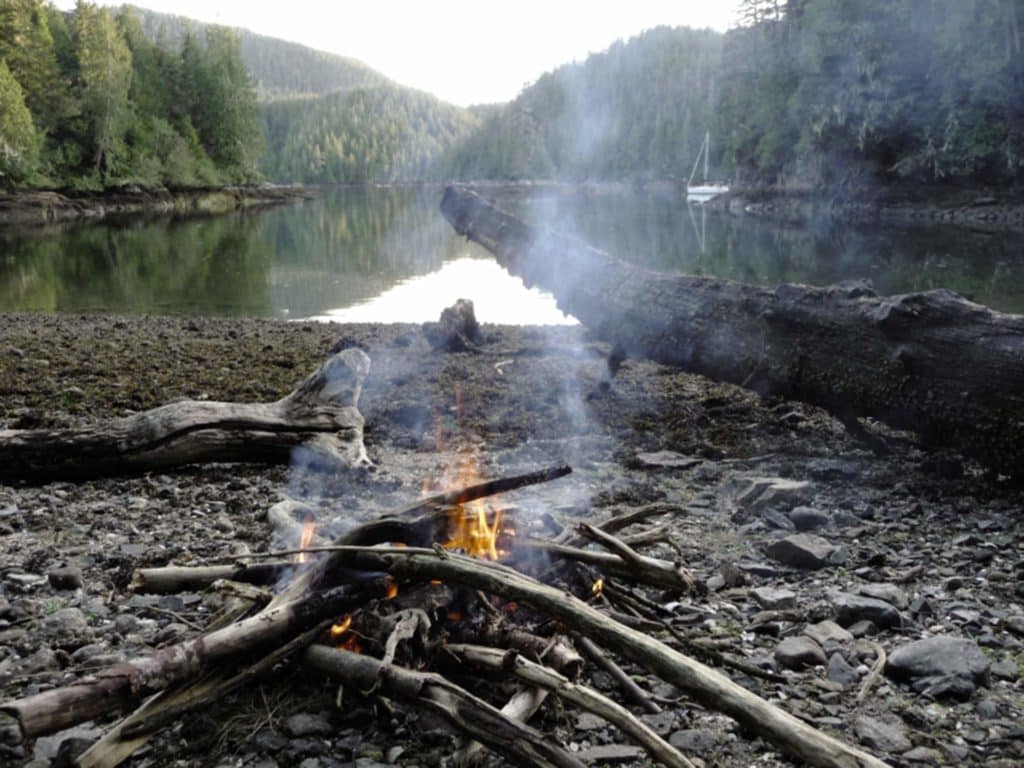
Fair enough. But the cruising sailor knows that’s not the whole story. There’s another acronym for boat that Rebecca and I have adopted during our travels in Liberte, one that feels much closer to the truth. For anyone who has cast off the lines, followed those dots, and found themselves wealthy beyond belief in anchorages, stories and friends, boat really stands for “best of all times.”
It stands for shooting stars on watch, sunrise at sea, and new islands off the bow. A world more vast, astonishing and splendid than seems possible.
So grab that chart, draw an X on some destinations, then sail there. When you do, I promise that those little X’s will come wonderfully alive with stories all your own.
David Kilmer runs a private sailing yacht and wrote A Peril to Myself and Others: My Quest to Become a Captain.








